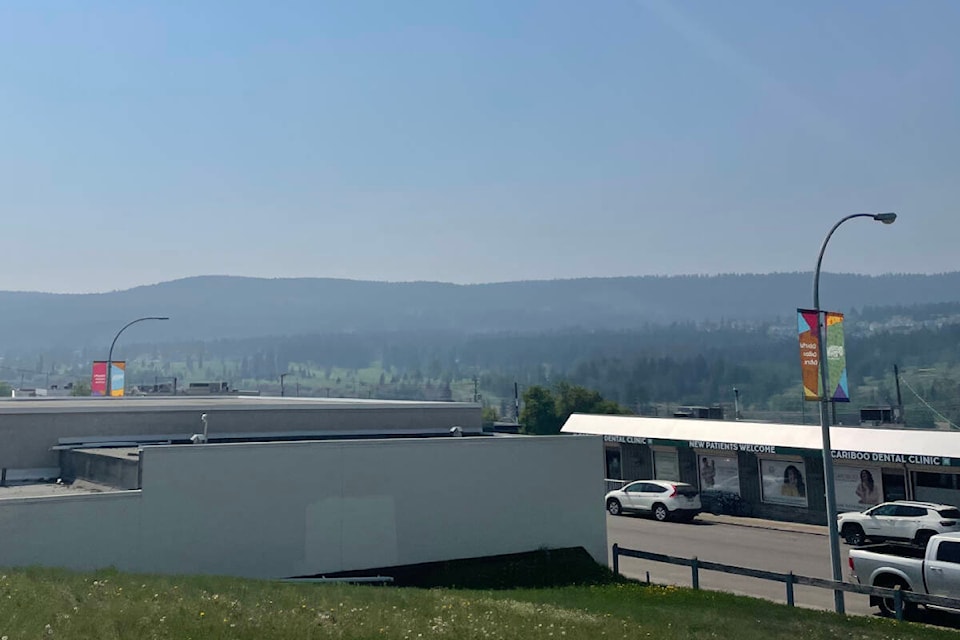Environment Canada has issued a special air quality statement May 16 due to wildfire smoke extending across the Cariboo and Omineca regions.
The smoke also extends through central B.C. and into southeastern B.C. along the Rocky Mountains.
Haze and smoke will be variable across these areas and is expected to worsen later in the day and overnight.
The next bulletin update will be available May 17, 2023.
The bulletin can be accessed online at: https://www2.gov.bc.ca/gov/content/environment/air-land-water/air/air-quality/air-advisories.
Environment Canada reminds citizens wildfire smoke can be harmful even at low concentrations.
Those with lung disease or heart disease, older adults, children, pregnant people and people who work outdoors are at higher risk of negative health effects caused by wildfire smoke.
Talk to your health care provider about a management plan for wildfire smoke events and maintaining a supply of necessary medications at home and always carry these with you during wildfire season.
Stop or reduce your activity level if breathing becomes uncomfortable or you or someone in your care feel unwell. Contact your health care provider or local health authority if you develop severe symptoms or need advice.
Check the Air Quality Health Index (AQHI) and monitor your symptoms. People respond differently to smoke. Mild irritation and discomfort are common, and usually disappear when the smoke clears. Drinking lots of water can help your body cope with the smoke.
If you have an HVAC system in your home, use the highest rated MERV filter for your system (ideally rated 13 or higher) and set the fan to recirculate air constantly. You can also use a portable High Efficiency Particulate Air (HEPA) air cleaner. Keep your doors and windows closed if the temperature in your home is comfortable.
Take a break from the smoke at a location in your community where you can find clean, cool air.
If you must spend time outdoors, a well-fitted respirator type mask (such as a NIOSH certified N95 or equivalent respirator) that does not allow air to pass through small openings between the mask and face, can help reduce your exposure to the fine particles in smoke. These fine particles generally pose the greatest risk to health. However, respirators do not reduce exposure to the gases in wildfire smoke. It is important to listen to your body and reduce or stop activities if you are experiencing symptoms.
Be sure to check on people in your care and those around you who may be more susceptible to smoke.
Reduce sources of indoor air pollution. If you can, avoid smoking or vaping indoors, burning incense and candles, frying foods, using wood stoves and vacuuming. Dust on indoor surfaces can be removed by wiping and wet mopping during a pollution episode.
If you experience any feelings of stress, anxiety, or depression, contact your mental health care provider for advice or visit https://www.wellnesstogether.ca/en-CA.
For more information on current air quality, visit www2.gov.bc.ca/gov/content/environment/air-land-water/air.
Visit www.airhealth.ca for information on how to reduce your health risk and your personal contribution to pollution levels, as well as for current and forecast AQHI values.
Please continue to monitor alerts and forecasts issued by Environment Canada.
READ MORE: New B.C. wildfire regulations aim to prevent human-caused fires
READ MORE: B.C. Wildfire responding to wildfire north of Clinton
Do you have a comment about this story? email:
ruth.lloyd@wltribune.com
Like us on Facebook and follow us on Twitter.
